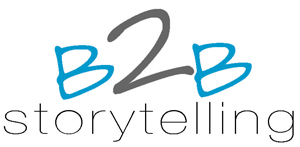Should You Trust Your Business to the $25 Case Study Writer?
I just saw an ad for a freelance case study/customer success story writer. Applicants must have “impeccable english (sic) skills and flawless grammar” along with case study samples and experience in order to write 1200 word case studies. And the pay for such an established writer? $25 per case study.
Sadly, this ad will undoubtedly receive applicants who either a) are in desperate need of $25 and don’t mind spending numerous hours for what will end up being well below minimum wage per hour or b) are not committed to creating insightful, effective case studies, and are happy to score $25 for an hour’s (shabby) work.
Case studies are used to show your prospective clients how your product or service solved a current client’s problem. Think about it– much of your marketing collateral is used to show what you COULD do. Case studies are one of the few documents that say– hey, this is what we HAVE done, and have done well.
The Eccolo Media 2011 B2B Technology Collateral Survey Report asked U.S. business technology employees what types of marketing collateral influenced their decisions to purchase. 68% said case studies were influential or extremely influential in making that decision to buy. Since case studies attract and persuade potential buyers, a well-crafted success story can bring in business. On the other hand, a badly written one reflects negatively on the entire company.
Case studies vary in fees, depending on several factors including how technical the information is, whether the writer is just doing the interviewing and writing or if she is also acting as a project manager and the time frame for completing the job. Businesses should want case study writers who have, yes, impeccable English (with a capital E) skills, but also an understanding of your company’s business goals, an ability to showcase your product’s strengths while incorporating your marketing message in an engaging story.
And frankly, $25 won’t get you even close to that.
Want to know more about what a case study writer should do for you? Email me at pamela@b2bstorytelling.com.
Read MoreTalk Back to Me! Getting People to Respond to Your Blog
Yoo hoo! Anyone out there? That’s a common feeling among new bloggers, who wonder if anyone in the digital universe even knows they exist.
Keep in mind that building a following for your blog is a long-term process. As much as we want it to, it can’t be rushed. But you can do a few things to encourage people to read your posts.
1. Recognize that you may have readers, but not responders. Many a lurker may religiously read your blog posts, but never make a comment. Liz Strauss gives some excellent tips on why this may happen and what you can do about it in her article, “10 Reasons Readers Don’t Leave Comments.”
2. Does your post invite conversation? We can write a post so definitively that we forget to ask for comments. Has that ever happened to you?
3. Comment on other people’s blogs. Invest some time reading the blogs of others who are interesting and relevant to you, and yes, add thoughtful input. The more you do this, the more those bloggers will notice you and begin to respond to your posts. The blogging community can be very supportive, but it is interactive, and you can’t just expect the comment train to go one way.
4. Invite opinions. Add your newest post to your LinkedIn groups and ask them what they think. Do the same with your Facebook business page, your personal FB page, Twitter and any other outlet you can think of.
5. Make it easy for people to comment. Do readers have to jump through hoops (i.e. come up with a user name and password) in order to respond? Is it likely that a first-time reader would go to that much trouble? Yes, you may have spam to content with, but as you’re building your blog following, it’s better for you to be the one who does the screening than your reader.
6. Respond quickly to comments. Once you get that wonderful comment, respond immediately, and try to keep the conversation going.
Keep writing, keep participating and keep responding and soon, you’ll build your audience.
What tactics have helped you get more readers?
(Don’t prove me wrong now; be sure to comment!)
Read MoreWrite That Blog Already– 5 Tips to Get You Started
Maybe it was one of your New Year’s resolutions. Maybe you’ve been told over and over that a blog on your website would increase traffic and enhance your rankings. Maybe you have personal ruminations that you want to share. In any case, with the fresh new year, you’re ready to start writing.
To make the most of your scribe time, here are five tips to make you a happy blogger.
1. Know why you’re blogging. Frankly, just because it’s good for business isn’t good enough. What is it you really have to offer that people would want to read (and that you would want to write)? It could be related to your industry or your products, but understanding why your readers would find it interesting is a critical first step.
2. Know what you’re blogging about. Even the most prolific writers can reach a dry spell once in a while, but having a plan that highlights the different areas you’ll cover will help you find new material. One great way to get started defining the subjects of your blog is with a bubble map (See? You can still use them after 7th grade!) The bubble map below has one main subject in the center, with other bubbles that describe the main subject. Those other bubbles can open up entirely new topics as well. With a well thought out bubble map, you will have plenty of material.
3. Amass a wealth of material. Once you’ve established the parameters of your blog topics, you’re ready to start writing. But if you want to make sure you’re up to date on any new information that comes up, set up a few Google Alerts with keywords pertaining to your blog’s subject. Whenever an article or blog goes online regarding that subject, you’ll be one of the first to know. Whip out a new post discussing the new trend, technology or legislation you just read about, and you become the instant expert.
4. Commit to your blog. Just like resolutions, many blogs fail when life gets in the way. Establish a blogging schedule, whether it is once a week or more, and know that it is a long-term commitment.
5. Get your blog out there. Now you’ve written your prose, you want people to read it, don’t you? If it’s a business blog, make sure it’s on your company’s website and business Facebook page. Send excerpts of it out on Twitter. Post it to your groups on LinkedIn. Invite your Facebook and real live friends to read it. Add a link to your blog on your email signature.
A blog is the start of a conversation. Next, we’ll talk about how to get people to talk back to you.
Why You Should Add Apples, Bananas, Cheese and Chicken to Your Website
 Think of your local grocery store. Sure, it has some shelf staples—shelves of canned goods, packages of dried beans. But what gets customers coming back most frequently? Fresh produce, dairy and meats.
Think of your local grocery store. Sure, it has some shelf staples—shelves of canned goods, packages of dried beans. But what gets customers coming back most frequently? Fresh produce, dairy and meats.
Your website is like a grocery store—full of information, products and services. Many areas may be fairly stable—like your canned goods. But to get customers returning to your site often, you must offer something of value that is new and fresh.
Articles and blogs provide current information to drive readers to you. Articles are often newsy and provide insights to industry, company and product information. Blogs have a less formal approach and may offer thought provoking opinions that invite conversation with the readers.
Who appreciates fresh content?
• Your readers—many people come to websites searching for information long before they make a purchasing decision. By providing sharing your knowledge through articles, you become a trusted resource—one which customers are more likely to buy from.
• Search engines—even though search engines are reconfigured on a regular basis, one aspect stays true: search engines love new, useful content. By providing this type of information on a regular basis, your business is more likely to be more visible on the Internet, which means you can get found more easily and more often.
• Your marketing and sales teams—when you have a steady supply of new articles and blogs, you provide your employees with more persuasive material to work with. And, as more people link to and read the articles and blogs, it can make the sales pitch a done deal.
Oh—who doesn’t appreciate fresh content on your website?
Your competition.
Read MoreYour References, Please?
 On almost every job application, in almost every interview, the question is inevitably asked: do you have references?
On almost every job application, in almost every interview, the question is inevitably asked: do you have references?
Employers know that during the interview process, candidates want to sell themselves in order to be offered the job. Candidates will highlight strengths and omit weaknesses. Their resume may exaggerated] the amount of their experience or degree of their results. When the only data about a candidate’s skills and experience comes from one source—the candidate, an employer may not know how much of a candidate’s information is trustworthy.
That’s where references come in. References, typically from previous employers, often present an accurate view of the employee’s work, giving a potential employer another view of the candidate’s capabilities. If the candidate says he created a new system that resulted in major savings for the company, and the previous boss provides a reference that says the same thing, a potential employer is more likely to feel confident in making a hiring decision, and therefore may make it more quickly.
When making a purchasing decision in business, just like in the hiring process, hiring managers customers– want references. They want to know that a company that promises them the world has actually delivered that world to previous customers.
References or customer success stories, give potential customers that “previous employer” viewpoint without being a sales job. Because of that, customers are more likely to trust an authentic reference and feel more confident in making a buying decision, therefore shortening the sales cycle.
With a well-planned customer reference program containing effective customer success stories, you can increase the likelihood that potential customers will indeed “hire” your business.
Need help with creating your customer success stories? Contact me today so we can get started.
Read More



